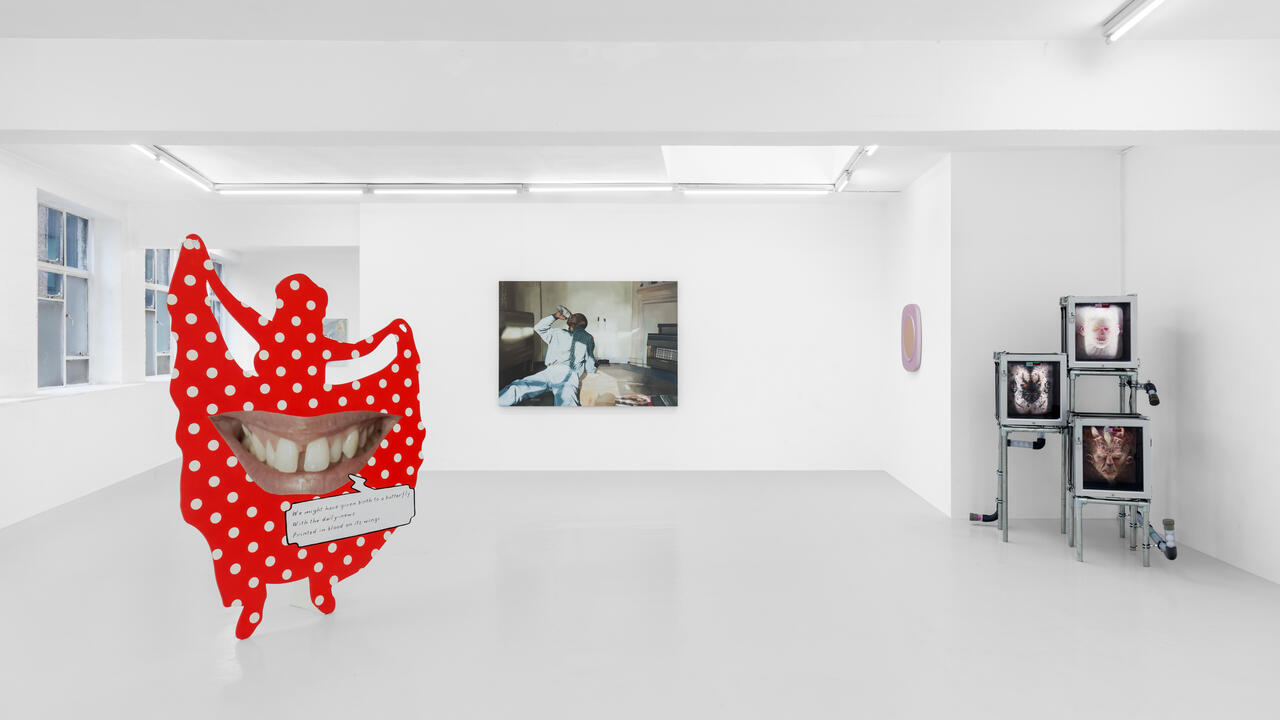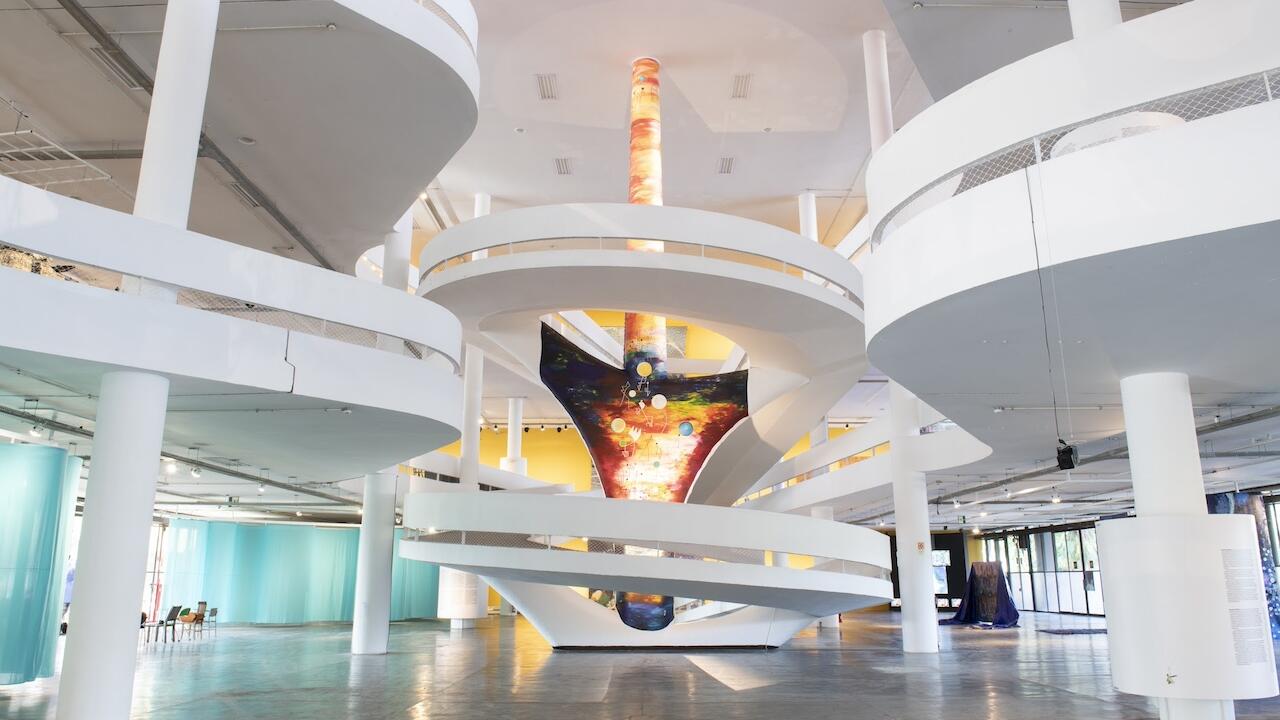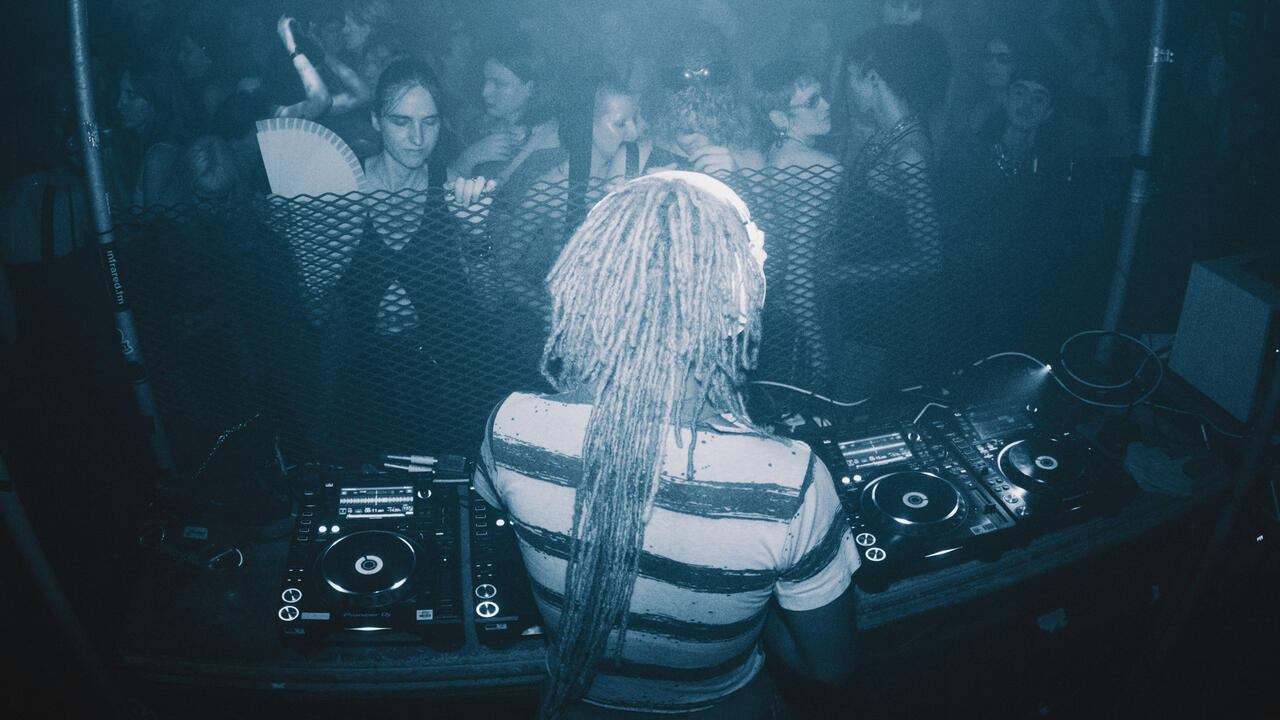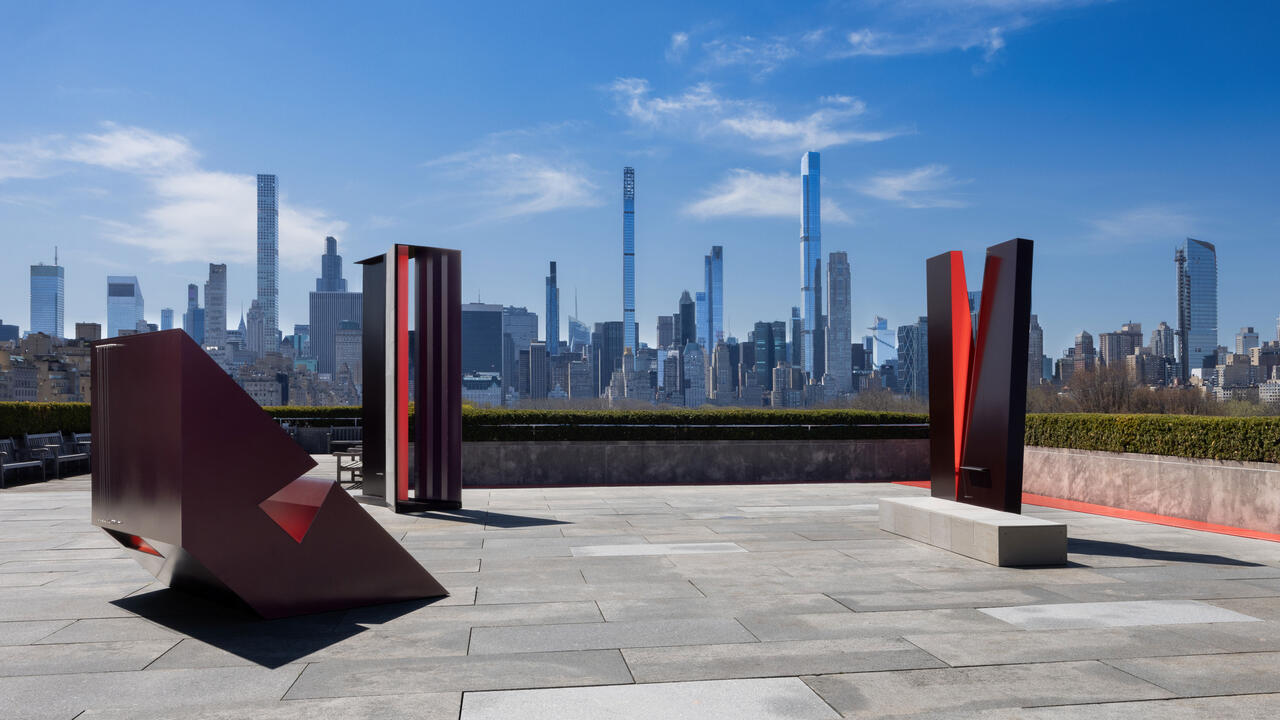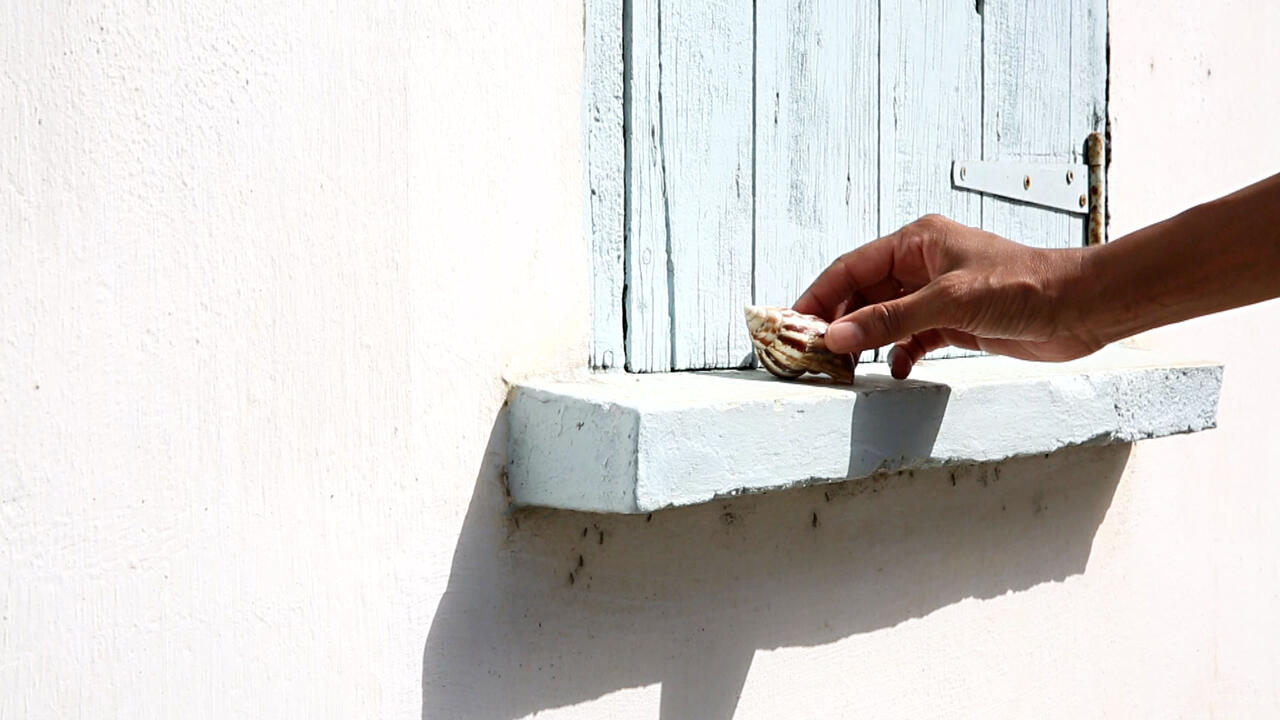Wolfgang Tillmans Delves into the Inherited Violence of Britten’s ‘War Requiem’
The Turner Prize-winning photographer’s set design for ENO’s new production asks: can the greatest horror be better communicated by the unseen?
The Turner Prize-winning photographer’s set design for ENO’s new production asks: can the greatest horror be better communicated by the unseen?

On 11 November 2018, Pages of the Sea marked the centenary of the 1918 Armistice: a temporary installation of portraits of First World War individuals drawn at aerial scale into the sands of 30 beaches, from Folkstone to St Andrews, under the direction of filmmaker Danny Boyle. One of the most high-profile commissions from 14-18 Now, the five-year programme of artworks marking the First World War centenary, Boyle’s was also the shortest lived: each image washed away with the day’s tide. This ephemerality was to my mind the work’s redeeming feature – evoking not so much the poignancy of lives cut short by war, but the strange amnesia that exists within our memorial practice: in which unrelenting solemnity about the tragedy of war is seen to pose no friction with ongoing military engagements.

Six days after Pages of the Sea, different tides were under scrutiny in the intermission of English National Opera’s new production of Benjamin Britten’s War Requiem (1962): shaky tracking shots of foaming, detergent-filled waves breaking on an anonymous shore. The footage was the work of artist Wolfgang Tillmans, making his opera debut as designer for this dramatized, semi-narrative new staging of what is widely considered Britten’s masterpiece, directed by the company’s Daniel Kramer and with choreography by Ann Yee.
War Requiem was originally commissioned for a festival marking the 1962 consecration of the new Coventry Cathedral, built besides a 14th-century forebear which was destroyed by bombing in World War Two. But rather than the grand, Basil Spence-designed structure for whose spaces Britten devised the piece, it is the remains of the older cathedral which inspires the most piercingly effective part of Tillmans’s visual design. At the end of the Mass’s first section, the Requiem aeternum, the vast projector screen at the stage’s back (Tillmans’s primary means throughout the production, along with three tall moveable LED screens) is filled with a wide shot of the medieval ruins, bare against the sky; broken masonry and unloved benches give the scene a dowdy, municipal air. At first almost unnoticeably, the camera zooms in on an indistinct bit of carving (a piscina perhaps) to the centre-right of the frame, until it fills the screen: a vertiginous effect, like gliding down the barrel of a gun. As the shot tightens on this unpromising detail, the true subject comes into focus – a piece of moss, growing unnoticed over the stones. As the image grows in size it takes on different aspects: at one moment, it recalls mould on a heel of bread, at another, grasses sprouting in a landscape. Even among dreary ruins, strange new life grows.

This single sequence feels like the heart of this production’s visual schema (indeed, it appears literally in the middle of the programme, a close-up of the moss reproduced as a gatefold edition). In a sense, the image is well-trod territory for Tillmans (an act of concerted looking, uncovering something wonderful in the everyday) – but it also strikingly resonates with the organic metaphors so common to British WWI art, from ‘In Flanders Fields’ to the closing credits of ‘Blackadder Goes Forth’ (1989). Accompanying a section of the Dies irae is a towering projection of Tillmans’s monochrome Chrysanthemum (2006) – an improbable plume of white, resplendent on an almost black background, as stark as a flare in the night. Momentarily conjuring the poppy (designated badge of remembrance wherever the British Army has a presence), it also brought to mind the submerged trauma in Monet’s Grandes Décorations (1914–18), begun the winter that hostility broke out, the sound of artillery fire sometimes audible at Giverny.

Though commissioned within the context of post-WWII recovery, War Requiem is redolent with references to the earlier war. In a sense, Britten didn’t respond to any particular war so much as war itself – war, and its stupefying ability to germinate in generation after generation. The Requiem’s very structure, indeed, emphasizes violence unfolding across eras, as Britten complements the main chorus with distinct voices of the past – a baritone and a tenor who sing poems by Wilfred Owen, thus identified as WWI soldiers – and voices of the future, in the form of the children’s chorus. With Nasir Mazhar’s excellent costumes (a melange of flat caps and bonnets, hoodies and sleeve garters) blurring the sense of historical period, Tillmans’s visuals in this production too emphasise the intergenerational dynamics of violence. Thus, the chorus first emerge on stage squeezed between two screens, each showing pages from Ernst Friedrich’s pacifist 1924 photobook Krieg dem Kriege! (‘War on War!’), progressing from images of militaristic children’s toys – soldiers, cannons, warships – to excerpts from a series of portraits of wounded troops, graphically detailing the disfiguring effect of modern warfare.
‘Photography as shock therapy’ is how Susan Sontag described Friedrich’s book in Regarding the Pain of Others (2003). But if so, this therapy’s effectiveness has no guarantee, this production implies: the trauma conveyed by the score still follows the audience’s shocked exposure to these images, just as historically, the ‘War to End All Wars’ proved nothing of the sort. Britten, a committed pacifist, composed the work against a backdrop of the Cold War, nuclear proliferation, and growing awareness of atrocities in Vietnam and channelled his ‘outrage’ at such into the work, as Philip Reed’s essay in the programme claims. Tillmans is true to this unquiet spirit, showing the audience a banner for a website commemorating the 1995 Srebrenica massacre, and shots of resurgent racist nationalists on the streets in Poland. In this framing, war is not merely a matter of the deeds of our ancestors, but a question for us – for those to come.

From Friedrich’s illustrations of toy soldiers onwards, children in the production are shown to enact and re-enact inherited forms of violence. In one striking tableaux, one group of the children’s chorus from atop a karst-like lump of silver metal, observe another playing a game of Ring-a-ring o’Roses, while a single isolated child lies cruciform on the ground. Owen’s retelling of the biblical sacrifice of Isaac, ‘Parable of the Old Man and the Young’, which Britten inserts alongside the Offertorium is performed here by the tenor and baritone as a grim entertainment to the children of the chorus. One unfortunate boy is plucked from the crowd as a co-performer, held close to the baritone as he mimes slitting the boy’s throat (a fascinating metatextual commentary, given Britten’s complicated psychosexual investment in the figure of the youth, intriguingly explored in ENO’s 2011 production setting of A Midsummer Night’s Dream in a boys boarding school).

The elder’s willingness to sacrifice the younger (Tillmans’s 2012 Sheep Shadow is projected at one point, in lieu of a literal scapegoat); that the experience of war does not stop one generation sending another to fight again (the death toll of the final line of Owen’s ‘Parable’ – ‘half the seed of Europe, one by one’ is flashed up on the screen) – these are the subjects of the production’s ire. In the night’s most heart-stopping moment, during the Agnus Dei, the child members of the chorus are laid down at one side of the stage with all the dreadful neatness of a planned mass grave. Then, at the call of the tenor-solider, they stand erect and file into line, ready to march to a new war.

The children, watched by the rest of the chorus, horrified and still, disappear offstage during the Libera Me. While the battlefield is hidden, the on-stage screens show an abstract quiver – a pooling brown field, like a mutated sample of one of Tillmans’s ‘Greifbar’ images (2014–15). With such gestures the production seems to ask: if graphic imagery such as Friedrich’s fails as prophylactic, can the greatest horror be better communicated by the unseen? The final image Tillmans presents is a projection of his Tree Filling Window (2002), which towers over an open grave, left over from an earlier burial scene. Tree Filling Window is one of the artist’s most ravishing works: perfectly framed, balancing profusion and restraint, the tree’s colour greening the whole frame, as if cellulose is infusing the architecture. Like the earlier moss among ruins, placing an image of natural growth at the end of the Requiem here provides a reiteration of the vegetative myth: that after death another, green world is possible (even inevitable). For a production so attentive to the ongoing-ness of violence, and the potential hollowness of remembrance, it’s a strangely consoling – even complacent – closing motif here. Still, I imagine, it’s probably never looked more beautiful.
Benjamin Britten, War Requiem, is on at the English National Opera at the London Coliseum until 7 December 2018.
Main image: Benjamin Britten, War Requiem, 1962, English National Opera, 2018, performance documentation. Courtesy: English National Opera; photograph: Richard Hubert Smith












